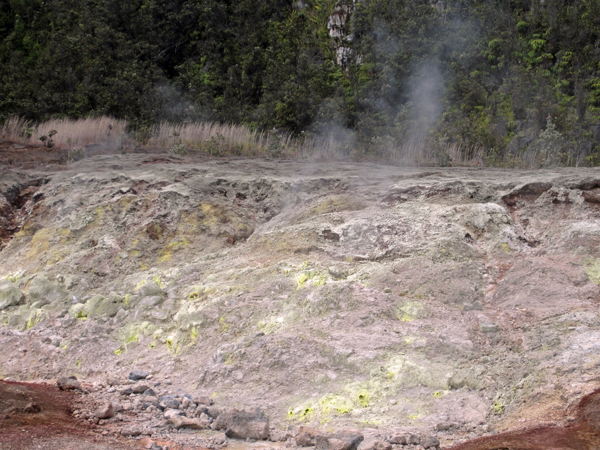I was very encouraged at the County Council meeting on geothermal that was held in Pahoa this last Tuesday evening. The community had a chance to be heard.
The Puna community met several times prior to that meeting, and Steve Hirakami, acting as facilitator, identified the community’s main concerns. About 100 votes indicated that the Pele cultural issue was a top concern. Non-Hawaiians taking this position vastly outnumber Hawaiians. Seventy to 80 folks listed health and safety as their top issues.
From the testimony at Tuesday’s meeting, it is clear that the Puna community feels uneasy about geothermal. I understand that the Environmental Committee, chaired by Councilwoman Brittany Smart, will be holding hearings regarding environmental issues – specifically health and safety. The hearings will bring clarity to the issues.
What we do know right now is the State Department of Health does not allow open venting, and requires they be alerted when emissions exceed 25 parts per billion. Note that personal H2S monitors sold on the Internet measure in “parts per million.” A billion is a thousand million. The Department of Health’s requirement is a very conservative one.
Hydrogen sulfide and sulfur dioxide coming out of the ground at the Sulfur Banks at Volcano, Hawai‘i
I commend Mayor Kenoi for initiating the Sister City relations with Ormoc City and for supporting the Geothermal Working Group, which was operating under an unfunded mandate. He has taken on the goal of making Hawaii County 100 percent reliant on non-fossil fuels by 2015.
That’s a high bar, but he has the guts to aim high. What’s at stake requires us to have a clear goal, for the benefit of all of us. Mayor Kenoi knows that geothermal will result in a better future for us all.
Patrick Kahawaiola‘a, President of the Keaukaha Community Association, told me, “It is about the process” – and so we need to aloha everyone, no matter what side of the issue they are on. And Kumu Lehua Veincent told me: “What about the rest?” He meant that this is about all of us, not just a few.
We all know that oil prices have doubled every 5.5 years recently. If it continues to follow that pattern, we do not have much time to act. We must all work together to find the best solution for all of us.
I visited both Iceland and the Philippines, and in both places open venting is allowed at their geothermal plants in certain circumstances. I learned that Hawai‘i’s air quality standards are very high compared to in those countries.
In August 2000, the EPA issued a report regarding the geothermal well blowout that occurred at Puna Geothermal Venture in June 1991. Read “Report on the Review of Hawaii County Emergency Operations Plan and Puna Geothermal Venture Emergency Response Plan” here. The Environmental Committee can use these findings and recommendations as a starting point.
From that report:
Blowout of well KS-8 June 12, 1991
Cause and Duration
“The blowout caused an unabated release of steam for a period of 31 hours before PGV succeeded in closing in the well. The report finds that the blowout occurred because of inadequacies in PGV’s drilling plan and procedures and not as a result of unusual or unmanageable subsurface geologic or hydrologic conditions.”
“Not only did PGV fail to modify its drilling program following the KS-7 blowout, but they also failed to heed numerous “red flags” (warning signals) in the five days preceding the KS-8 blowout, which included a continuous 1-inch flow of drilling mud out of the wellbore, gains in mud volume while pulling stands, and gas entries while circulating mud bottom up, in addition to lost circulation, that had occurred earlier below the shoe of the 13-3/8-inch casing.”
“PGV personnel took appropriate steps to control the well following the kick. However, there were certain inadequacies in PGV’s drilling operations and blowout prevention equipment. The mud cooler being used was inefficient. Monitoring equipment was not strategically placed. A sufficient supply of cold water was not available to pump into the wellbore to properly kill the well in the event of a blowout. The choke line was not of sufficient diameter to handle the volume of fluid that had to be vented, and there was no silencer on the end of the choke manifold line to reduce noise.”
It’s good that the County Council will be addressing all those issues. We all need to have a common frame of reference regarding safety. Everyone wants to do the right thing.

